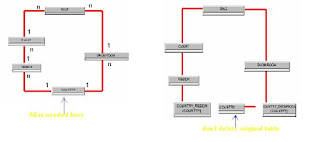
Define what a Loop is
Detect and recognize loops in Universe
Using Aliases and Contexts to resolve the loops
Identify when in the design process you resolve loops
Be able to use shortcut joins and know when to use them as alternative for resolving loops.
Be able to resolve recursive table structure loops.
…
A loop exists when the joins between...





